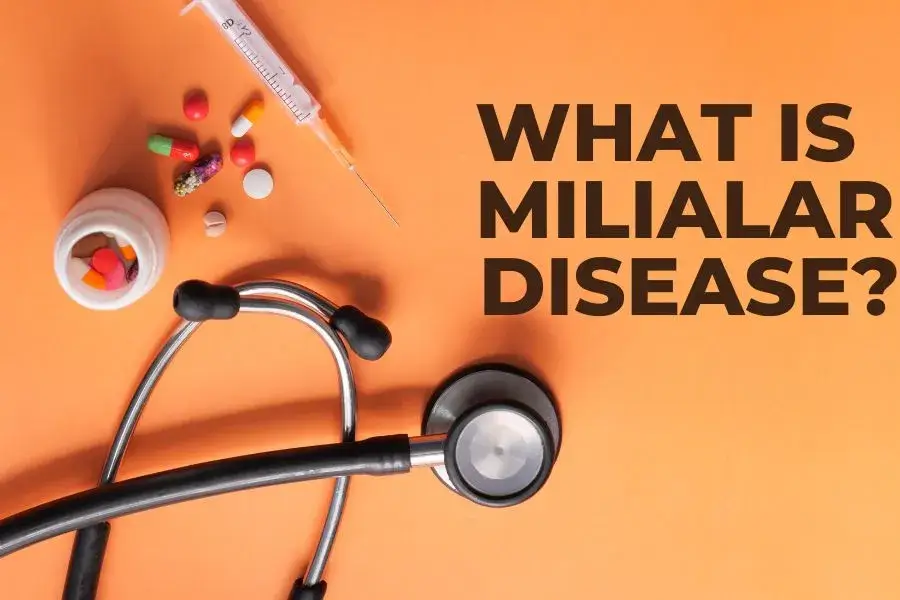Understanding Milialar Disease: A Comprehensive Guide

In the realm of rare medical conditions, Milialar Disease stands as an enigmatic and little-understood ailment. With its peculiar manifestations and limited prevalence, this article aims to provide a deep dive into the intricacies of Milialar Disease. We will unravel the genetic underpinnings, explore the symptoms, delve into diagnosis and medical assessment, examine treatment options, and discuss coping mechanisms for those affected by this mysterious condition. So, let’s embark on a journey to comprehend Milialar Disease like never before.
What Is Milialar Disease?
Despite its common mispronunciation as “miliary disease,” Milialar Disease is a rare genetic disorder that primarily affects the skin but can have far-reaching consequences. This section provides a comprehensive overview of the basics of Milialar Disease, ensuring that those grappling with it gain a thorough understanding of this condition.
The Genetic Underpinnings
At the core of Milialar Disease lies its hereditary nature. Due to this genetic illness’s autosomal recessive transmission pattern, the parents must be carriers for the mutant gene for their kid to be affected. We’ll look into the complex family histories that lead to this illness.
Symptoms and Manifestations
Milialar Disease’s manifestations extend beyond its peculiar name. This section delves into the symptoms and complications associated with this condition.
Skin Manifestations
The skin takes centre stage in the Milialar Disease drama. The condition’s name draws inspiration from the tiny, elevated, reddish-brown spots on the skin’s surface, resembling millet seeds. We’ll discuss the skin manifestations in detail, including the discomfort they can cause.
Systemic Complications
Milialar Disease doesn’t limit its impact to the skin alone. It has systemic consequences, affecting organs like the lungs and liver. This emphasizes the urgency of early diagnosis and intervention. We’ll shed light on the potential systemic complications.
Diagnosis and Medical Assessment
Early diagnosis is pivotal in managing Milialar Disease effectively. This section provides insights into seeking timely medical attention and the role of genetic testing in confirming the diagnosis.
Seeking Medical Attention
Recognizing the symptoms and promptly consulting a healthcare professional can significantly improve the prognosis of Milialar Disease. We’ll outline the steps to take when you suspect Milialar Disease.
Genetic Testing
Genetic testing plays a crucial role in the definitive diagnosis of Milialar Disease. We’ll explore the genetic tests used to identify the genetic variants responsible for this condition.
Treatment Strategies
While there’s no known cure for Milialar Disease, various treatment options can help manage its symptoms. This section outlines both symptomatic relief and the importance of a multidisciplinary approach.
Symptomatic Relief
Discover the options available for alleviating the skin discomfort caused by Milialar Disease, including topical lotions and ointments.
Multidisciplinary Approach
A multidisciplinary strategy is often necessary for systemic problems associated with Milialar Disease. We’ll delve into the involvement of specialists in respiratory and liver health.
Coping with Milialar Disease
Dealing with a rare condition like Milialar Disease can be emotionally challenging. This section discusses the importance of emotional support and how to seek it, whether from friends, family, or support groups.
Conclusion
Despite being relatively rare, Milialar Disease can greatly impact people due to its distinct skin manifestations and systemic implications. A prompt diagnosis and a comprehensive approach to therapy can considerably enhance the quality of life of affected people. We can create a more accommodating and kind world for people suffering from Miliary Disease by remaining informed, encouraging research, and giving moral and practical support. If you also read about Azp300x then visit that article.
FAQs
Can Milialar Disease be prevented?
Unfortunately, Milialar Disease cannot be prevented outright as a genetic disorder. However, genetic counselling can help individuals understand their risk.
Is Milialar Disease contagious?
No, Milialar Disease is not contagious. It’s a genetic condition and cannot be spread through contact.
Are there any experimental treatments for Milialar Disease?
Currently, there are no widely recognized experimental treatments for Milialar Disease. Research in this field is ongoing, and new developments may arise.
What are the potential side effects of Milialar Disease treatment?
Depending on the method working, the side effects of medication can differ. Acute redness, itchiness, or scarring may occur in a few individuals, though these negative reactions are typically tolerable.
Where can I find more information about Milialar Disease?
For up-to-date information and resources related to Milialar Disease, consider consulting reputable medical sources and organizations specializing in rare.
In this comprehensive guide, we’ve unravelled the mysteries of Milialar Disease, providing valuable insights for those affected by the condition and those seeking to understand it better. Remember, knowledge and support can make a significant difference in the lives of individuals grappling with rare diseases like Milialar Disease.





